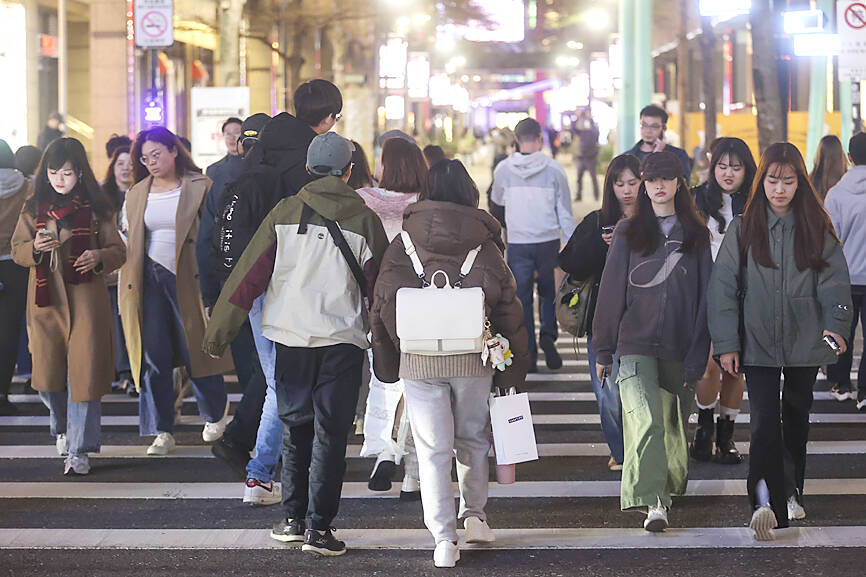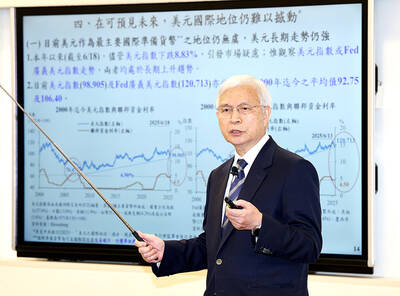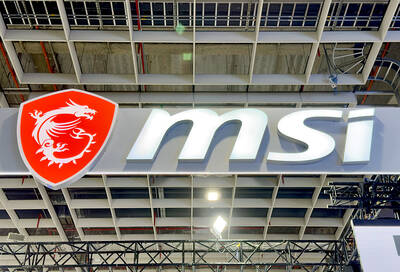Taiwan’s unemployment rate last month rose slightly to 3.34 percent, up 0.04 percent from January, as firms reduced temporary positions and some discontented workers moved on, the Directorate-General of Budget, Accounting and Statistics (DGBAS) said yesterday.
The latest data ended five consecutive months of decline, but reached the lowest level for the same month in 25 years, the agency said.
“The unemployment rate is expected to ease this month, as people who left their jobs have gradually found new positions,” Census Department Deputy Director Tan Wen-ling (譚文玲) said.

Photo: CNA
Tan attributed her forecast to improving labor participation rates, which climbed to a 36-year high of 59.33 percent last month, as more people, especially those aged 50 and older, re-entered the job market.
The government has encouraged older people to rejoin the workforce to enhance their financial standing and help ease labor shortages induced by Taiwan’s low birthrate.
The jobless rate after seasonal adjustments shed 0.02 percent to 3.35 percent, indicating a stable job market, Tan said.
The total number of people unemployed rose to 402,000, an increase of 6,000, or 1.39 percent, driven by 4,000 people who voluntarily left their jobs and services-oriented firms cutting temporary positions linked to the Lunar New Year holiday, the agency’s monthly report showed.
By education level, people with university degrees recorded the highest unemployment rate at 4.52 percent, followed by those with high-school or vocational-school education at 3.15 percent, it said.
Those with graduate degrees had an unemployment rate of 2.75 percent, while people who had completed only junior-high school or below had the lowest unemployment rate at 2.05 percent, it added.
Demographically, people between the ages of 20 and 24 had the highest unemployment rate, at 11.33 percent, followed by the 15 -to-19 age group, at 8.16 percent, and those aged 25 to 29, at 5.69 percent, the agency said.
People aged 35 and older had lower unemployment rates, ranging from 2.51 percent for those aged 35 to 39, to 2.2 percent for the 45-to-64 age group, it said.
The average unemployment period last month was 20.1 weeks, down 0.7 weeks from the previous month, while first-time jobseekers took an average of 21.7 weeks to secure employment, the agency said.
Tan said that a rising number of people aged 65 and older show an increasing willingness to return to the workforce as employers from different sectors become more accommodating of older people.
Still, underemployment worsened, rising to 7.58 percent, or 118,000 people, the agency found.
The sharp increase was largely due to unfavorable seasonality following the end of the Lunar New Year holiday, Tan said.

DIVIDED VIEWS: Although the Fed agreed on holding rates steady, some officials see no rate cuts for this year, while 10 policymakers foresee two or more cuts There are a lot of unknowns about the outlook for the economy and interest rates, but US Federal Reserve Chair Jerome Powell signaled at least one thing seems certain: Higher prices are coming. Fed policymakers voted unanimously to hold interest rates steady at a range of 4.25 percent to 4.50 percent for a fourth straight meeting on Wednesday, as they await clarity on whether tariffs would leave a one-time or more lasting mark on inflation. Powell said it is still unclear how much of the bill would fall on the shoulders of consumers, but he expects to learn more about tariffs

NOT JUSTIFIED: The bank’s governor said there would only be a rate cut if inflation falls below 1.5% and economic conditions deteriorate, which have not been detected The central bank yesterday kept its key interest rates unchanged for a fifth consecutive quarter, aligning with market expectations, while slightly lowering its inflation outlook amid signs of cooling price pressures. The move came after the US Federal Reserve held rates steady overnight, despite pressure from US President Donald Trump to cut borrowing costs. Central bank board members unanimously voted to maintain the discount rate at 2 percent, the secured loan rate at 2.375 percent and the overnight lending rate at 4.25 percent. “We consider the policy decision appropriate, although it suggests tightening leaning after factoring in slackening inflation and stable GDP growth,”

Meta Platforms Inc offered US$100 million bonuses to OpenAI employees in an unsuccessful bid to poach the ChatGPT maker’s talent and strengthen its own generative artificial intelligence (AI) teams, OpenAI CEO Sam Altman has said. Facebook’s parent company — a competitor of OpenAI — also offered “giant” annual salaries exceeding US$100 million to OpenAI staffers, Altman said in an interview on the Uncapped with Jack Altman podcast released on Tuesday. “It is crazy,” Sam Altman told his brother Jack in the interview. “I’m really happy that at least so far none of our best people have decided to take them

PLANS: MSI is also planning to upgrade its service center in the Netherlands Micro-Star International Co (MSI, 微星) yesterday said it plans to set up a server assembly line at its Poland service center this year at the earliest. The computer and peripherals manufacturer expects that the new server assembly line would shorten transportation times in shipments to European countries, a company spokesperson told the Taipei Times by telephone. MSI manufactures motherboards, graphics cards, notebook computers, servers, optical storage devices and communication devices. The company operates plants in Taiwan and China, and runs a global network of service centers. The company is also considering upgrading its service center in the Netherlands into a